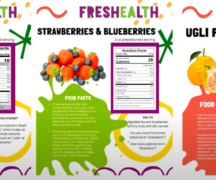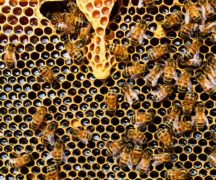By JULIE CARLE
BG Independent News
Soybeans, the small little bean that is a cash crop in Ohio, is forging new paths beyond the familiar tofu and animal feed thanks to an Ohio research lab.
Airable Research Lab, an Ohio Soybean Council-funded laboratory, is working to stretch the uses of soybeans to benefit soybean farmers, consumers and companies. are benefiting from the research and development work at Airable Research Lab, an Ohio Soybean Council-funded laboratory in Delaware, Ohio.
The research lab partners with companies to create innovative and sustainable biobased solutions to improve a product or create something new, said Barry McGraw, CEO and Chief Laboratory Officer of Airable Research Lab, during the July CIFT Agribusiness Forum.
Among the innovations that the lab has had a hand in developing are Roof-MaxxTM, a shingle sealer and rejuvenator, and DeWalt Bar and Chain biodegradable oil. Both products utilize a form of soybean oil to make them more sustainable. They also filed provisional patents for a thermoset resin, a PVC application and a surfactant cationic surfactant.

Airable’s mission is to maximize profits for soybean farmers by creating more demand for soybeans beyond tofu and traditional animal feed. But they also are involved in bringing sustainable products to fruition for consumers and helping companies reduce dependence on petroleum.
With a majority of chemical scientists comprising the 10- to 12-person staff, “Airable works directly with commercial or consumer companies that want soy-based or biobased products on their shelves, in their markets or on raw material lines,” McGraw explained.
“We do early-stage research for them at no cost, taking the risk away from them and getting them into biobased products,” he said. They help companies understand that soy can replace petroleum-based products or improve the functionality of existing biobased products.
The lab, which receives funds from the soybean checkoff, is housed in four wet chemistry labs at Ohio Wesleyan University. Among their current technologies are polyols, a degradable ester, for foam; soy-based cationic surfactants; an additive that minimizes shrinking, strain and damage in concrete; high-melting soy wax; an additive that inhibits corrosion to water-based systems; and carbonated soy.
Though they also look at applications for meal or co-products, 75 to 80% of the lab’s work is with the oil. “Typically, you are trying to replace a petroleum oil, so it is a natural fit,” McGraw said.
“We are trying to bridge the gap between research and commercialization,” McGraw added. “We don’t differentiate who we work with, we are always looking for more commercial companies looking to help us grow and innovate.”
For companies that have had a bad experience in the past with soy or bio-based chemistry, McGraw and his team try to help them understand the new techniques. They listen to the companies’ needs whether it is for technical targets or material characteristics. Early-stage proof of principles research determines if it’s possible to develop what they need, McGraw said.
“Why should farmers care?” he asked.
“We take the middleman out, so we are not funding universities necessarily to develop new products or other research organizations. We are funding ourselves, and we are working directly with a commercial company, improving the probability of success by developing what they need,” McGraw said.
The lab is unique because “we all wear soybean hats 100% of the time.” He is not aware of another lab that is focused exclusively on one biobased raw material. “We are becoming experts at soy-based chemistry and adding soy into products,” he added.
In addition to receiving funds from the Ohio Soybean Council, the lab has added Illinois, Kentucky, Michigan and Missouri soybean councils to their partnerships.
“We can control intellectual property which is important to our commercial partners,” he said. “If we believe we can’t solve a problem, we’ll stop that project and move on to the next thing. Or if it shows promise, we’ll put more research towards it.”
Whether the research is early stage or late stage, once it is a viable project, Airable licenses the technology to the commercial company to move the product into manufacturing. Once the product is commercialized, Airable hopes the company will provide a royalty back to the lab.
“We are a nonprofit, but we are able to grow through some royalties. We are not trying to make a profit but just creating some accountability and payback for the farmers,” McGraw said.





